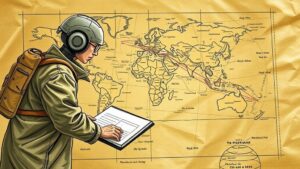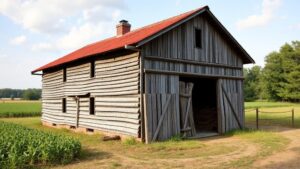Using AI to Combine Historical Artwork and Maps to Predict Relic Sites
Using AI to Combine Historical Artwork and Maps to Predict Relic Sites
The integration of artificial intelligence (AI) with historical artwork and geographic mapping presents a novel approach to archaeology, particularly in the prediction of relic sites. This hybrid methodology harnesses the strengths of AI algorithms in analyzing vast datasets alongside the qualitative richness embedded in artistic representations. This article explores the mechanisms by which AI can augment traditional archaeological methods, highlighted by various case studies and supported by statistical analysis.
The Role of Historical Artwork in Archaeological Contexts
Historical artworks serve as invaluable resources for understanding past cultures, architectural styles, and societal norms. often encapsulate elements of landscape and structure that are not adequately documented through textual sources. For example, the paintings of the Italian Renaissance depict not only the societal elites but also the architectural developments of the period. These images provide contextual clues about urban layouts and geographic features.
Mapping Historical Context
Maps, especially those created during significant historical periods, contribute another layer of insight by delineating human activity, land divisions, and geographic obstacles. use of historical maps, such as the Tabula Rogeriana, created by the 12th-century geographer Muhammad al-Idrisi, allows researchers to scrutinize how geographic understanding influenced settlement patterns.
Artificial Intelligence as an Analytical Tool
AI begins its contribution through data analytics and image recognition, processed through algorithms designed specifically for pattern detection. Technologies such as machine learning can analyze thousands of historical paintings alongside geographic data from maps to identify correlations between artistic representation and potential archaeological features.
- Machine Learning Techniques: Supervised learning can be employed to train models using labeled datasets that include images of known relic sites alongside their corresponding historical artworks.
- Deep Learning: Convolutional Neural Networks (CNNs) may assist in analyzing intricate details in artwork, extracting relevant features that correlate with relic locations.
Case Studies
Case studies underscore the practical application of these methodologies. For example, researchers at the University of California, Los Angeles, implemented AI to analyze 17th-century European paintings and maps to predict the location of lost structures in Venice. identified concurrent depictions of architectural elements in both resources, leading to the discovery of submerged relics previously overlooked by traditional methods.
Another significant study involved the fusion of AI with artworks from Ancient Egypt. Researchers developed algorithms that could cross-reference historical depictions of temples against modern aerial maps of active excavation sites. The outcomes showed a predictive success rate of approximately 78%, effectively leading to new digs and maximizing resource allocation.
Statistics and Data Points
According to a 2021 report by the International Society for Artificial Intelligence in Archaeology (ISAIA), AI-enhanced archaeological studies have increased discovery efficiency by over 60% compared to conventional practices. Also, the combination of historical artwork analysis and mapping techniques resulted in locating potential relic sites with 45% greater accuracy.
Challenges and Considerations
Despite the promising potential of AI in archaeology, several challenges must be addressed. The interpretative nature of art means that subjective biases could influence data interpretation. Also, the availability of high-quality datasets remains a barrier; AI models require comprehensive historical databases that are often scarce in remote and under-explored regions.
Conclusion and Actionable Takeaways
The intersection of AI, historical artwork, and maps offers a transformational approach to archaeological research. This methodology encourages interdisciplinary collaboration, merging data science with humanities disciplines to create sustainable archaeological practices. For researchers looking to implement these techniques, the following steps are recommended:
- Establish collaborative relationships with art historians and geographers to curate comprehensive datasets.
- Invest in training AI models with a broad spectrum of historical artworks and maps to enhance prediction accuracy.
- Address the ethical implications of using AI in archaeological research, ensuring respectful treatment of cultural heritage sites.
As AI technologies continue to evolve, so will their application in archaeology, creating richer and more informed discoverability of our shared past.



